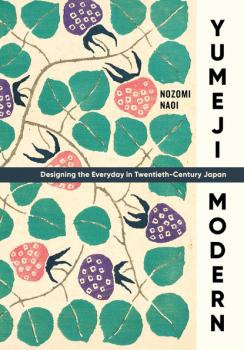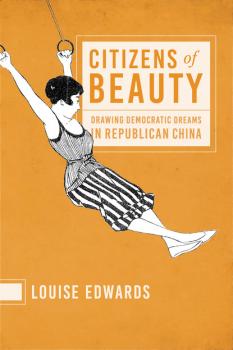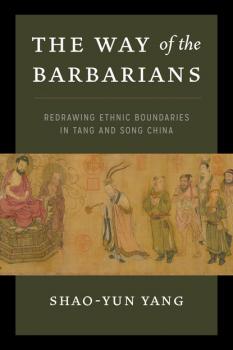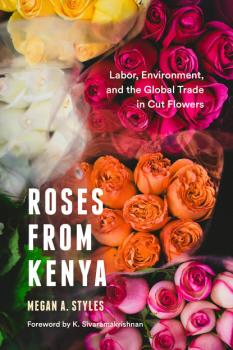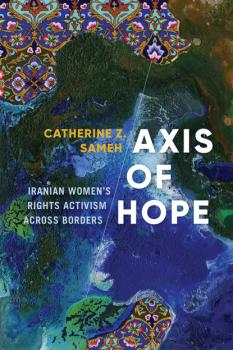ТОП просматриваемых книг сайта:
Историческая литература
Различные книги в жанре Историческая литература, доступные для чтения и скачиванияАннотация
The hugely popular Japanese artist Takehisa Yumeji (1884–1934) is an emblematic figure of Japan’s rapidly changing cultural milieu in the early twentieth century. His graphic works include leftist and antiwar illustrations in socialist bulletins, wrenching portrayals of Tokyo after the Great Kantō Earthquake of 1923, and fashionable images of beautiful women—referred to as “Yumeji-style beauties”—in books and magazines that targeted a new demographic of young female consumers. Yumeji also played a key role in the reinvention of the woodblock medium. As his art and designs proliferated in Japan’s mass media, Yumeji became a recognizable brand.In the first full-length English-language study of Yumeji’s work, Nozomi Naoi examines the artist’s role in shaping modern Japanese identity. Addressing his output from the start of his career in 1905 to the 1920s, when his productivity peaked, Yumeji Modern introduces for the first time in English translation a substantial body of Yumeji’s texts, including diary entries, poetry, essays, and commentary, alongside his illustrations. Naoi situates Yumeji’s graphic art within the emerging media landscape from 1900s through the 1910s, when novel forms of reprographic communication helped create new spaces of visual culture and image circulation. Yumeji’s legacy and his present-day following speak to the broader, ongoing implications of his work with respect to commercial art, visual culture, and print media.
Аннотация
In the early twentieth century China’s most famous commercial artists promoted new cultural and civic values through sketches of idealized modern women in journals, newspapers, and compendia called One Hundred Illustrated Beauties. This genre drew upon a centuries-old tradition of books featuring illustrations of women who embodied virtue, desirability, and Chinese cultural values, and changes in it reveal the foundational value shifts that would bring forth a democratic citizenry in the post-imperial era. The illustrations presented ordinary readers with tantalizing visions of the modern lifestyles that were imagined to accompany Republican China’s new civic consciousness. Citizens of Beauty is the first book to explore the One Hundred Illustrated Beauties in order to compare social ideals during China’s shift from imperial to Republican times. The book contextualizes the social and political significance of the aestheticized female body in a rapidly changing genre, showing how progressive commercial artists used images of women to promote a vision of Chinese modernity that was democratic, mobile, autonomous, and free from the crippling hierarchies and cultural norms of old China.
Аннотация
Following a remarkable transition from authoritarian rule to robust democracy, Taiwan has grown into a prosperous but widely unrecognized nation-state for which no uncontested sovereign space exists. Increasingly vigorous assertions of Taiwanese identity expose the fragility of relationships between the United States and other great powers that assume Taiwan will eventually unite with China.Perhaps because of their precarious international position, the Taiwanese have embraced cosmopolitan culture and democratic institutions. The 2014 Sunflower Movement thrust Taiwan’s politics into the global media spotlight, as did the resounding electoral victory of the once-illegal Democratic Progressive Party in 2016. Taiwan in Dynamic Transition provides an up-to-date assessment of contemporary Taiwan, highlighting Taiwan’s emergent nationhood and its significance for world politics. Taiwan’s path has important implications for broader themes and preoccupations in contemporary thought, such as consideration of why political transitions in the aftermath of the Arab Spring have sputtered or failed while Taiwan has evolved into a stable and prosperous democratic society. Taiwan serves as a test case for nation and state building, the formation of national identity, and the emergence of democratic norms in real time.
Аннотация
In the hill country of northeast Cambodia, just a few kilometers from the Vietnam border, sits the village of Tang Kadon. This community of hill rice farmers of the Jarai ethnic minority group survived aerial bombardment and the American invasion of Cambodia during the Vietnam War, only to find themselves relocated to the “killing fields” of the Khmer Rouge regime. Now back in their homeland, they have reestablished agriculture, seed by seed. Disturbed Forests, Fragmented Memories tells the story of violence and dispossession in the highlands from the perspective of the land itself. Weaving rich ethnography with the history of the Jarai and their treatment at the hands of outsiders, Jonathan Padwe narrates the highlanders’ successful efforts to rebuild their complex, highly diverse agricultural system after a decades-long interruption.Focusing on the ecological dimensions of social change and dispossession from the precolonial slave trade to the present moment of land grabs along a rapidly transforming resource frontier, Padwe shows how the past lives on in the land. An engrossing treatment of timely issues in anthropology and political ecology, this book will also appeal to readers in environmental studies, geography, and Southeast Asian studies.
Информация о книге
Автор произведения Jonathan Padwe
International Impact of Colonial Rule in Korea, 1910-1945 - Группа авторов
Center For Korea Studies PublicationsАннотация
In recent years, discussion of the colonial period in Korea has centered mostly on the degree of exploitation or development that took place domestically, while international aspects have been relatively neglected. Colonial discourse, such as characterization of Korea as a “hermit nation,” was promulgated around the world by Japan and haunts us today. The colonization of Korea also transformed Japan and has had long-term consequences for post–World War II Northeast Asia as a whole.Through sections that explore Japan’s images of Korea, colonial Koreans’ perceptions of foreign societies and foreign relations, and international perceptions of colonial Korea, the essays in this volume show the broad influence of Japanese colonialism not simply on the Korean peninsula, but on how the world understood Japan and how Japan understood itself. When initially incorporated into the Japanese empire, Korea seemed lost to Japan’s designs, yet Korean resistance to colonial rule, along with later international fear of Japanese expansion, led the world to rethink the importance of Korea as a future sovereign nation.
Информация о книге
Автор произведения Группа авторов
Аннотация
Rodeo is a dangerous and painful performance in which only the strongest and most skilled riders succeed. In the popular imagination, the western rodeo hero is often a stoic white man who embodies the toughness and independence of America’s frontier past. However, marginalized people have starred in rodeos since the very beginning. Cast out of popular western mythology and pushed to the fringes in everyday life, these cowboys and cowgirls found belonging and meaning at the rodeo, staking a claim to national inclusion. Outriders explores the histories of rodeoers at the margins of society, from female bronc-riders in the 1910s and 1920s and convict cowboys in Texas in the mid-twentieth century to all-black rodeos in the 1960s and 1970s and gay rodeoers in the late twentieth century. These rodeo riders not only widened the definition of the real American cowboy but also, at times, reinforced the persistent and exclusionary myth of an idealized western identity. In this nuanced study, Rebecca Scofield shares how these outsider communities courted authenticity as they put their lives on the line to connect with an imagined American West.
Аннотация
Shao-yun Yang challenges assumptions that the cultural and socioeconomic watershed of the Tang-Song transition (800–1127 CE) was marked by a xenophobic or nationalist hardening of ethnocultural boundaries in response to growing foreign threats. In that period, reinterpretations of Chineseness and its supposed antithesis, “barbarism,” were not straightforward products of political change but had their own developmental logic based in two interrelated intellectual shifts among the literati elite: the emergence of Confucian ideological and intellectual orthodoxy and the rise of neo-Confucian ( daoxue ) philosophy. New discourses emphasized the fluidity of the Chinese-barbarian dichotomy, subverting the centrality of cultural or ritual practices to Chinese identity and redefining the essence of Chinese civilization and its purported superiority. The key issues at stake concerned the acceptability of intellectual pluralism in a Chinese society and the importance of Confucian moral values to the integrity and continuity of the Chinese state. Through close reading of the contexts and changing geopolitical realities in which new interpretations of identity emerged, this intellectual history engages with ongoing debates over relevance of the concepts of culture, nation, and ethnicity to premodern China.
Аннотация
Preparing and consuming food is an integral part of identity formation, which in contemporary China embodies tension between fast-forward modernization and cultural nostalgia. Jin Feng’s wide-ranging exploration of cities in the Lower Yangzi Delta—or Jiangnan, a region known for its paradisiacal beauty and abundant resources—illustrates how people preserve culinary inheritance while also revamping it for the new millennium. Throughout Chinese history, food nostalgia has generated cultural currency for individuals. Feng examines literary treatments of Jiangnan foodways from late imperial and twentieth-century China, highlighting the role played by gender and tracing the contemporary metamorphosis of this cultural landscape, with its new platforms for food culture, such as television and the internet. As communities in Jiangnan refashion their regional heritage, culinary arts shine as markers of ethnic and social distinction.
Аннотация
Kenya supplies more than 35 percent of the fresh-cut roses and other flowers sold annually in the European Union. This industry—which employs at least 90,000 workers, most of whom are women—is lucrative but enduringly controversial. More than half the flowers are grown near the shores of Lake Naivasha, a freshwater lake northwest of Nairobi recognized as a Ramsar site, a wetland of international importance. Critics decry the environmental side effects of floriculture, and human rights activists demand better wages and living conditions for workers.In this rich portrait of Kenyan floriculture, Megan Styles presents the point of view of local workers and investigates how the industry shapes Kenyan livelihoods, landscapes, and politics. She investigates the experiences and perspectives of low-wage farmworkers and the more elite actors whose lives revolve around floriculture, including farm managers and owners, Kenyan officials, and the human rights and environmental activists advocating for reform. By exploring these perspectives together, Styles reveals the complex and contradictory ways that rose farming shapes contemporary Kenya. She also shows how the rose industry connects Kenya to the world, and how Kenyan actors perceive these connections. As a key space of encounter, Lake Naivasha is a synergistic center where many actors seek to solve broader Kenyan social and environmental problems using the global flows of people, information, and money generated by floriculture.
Информация о книге
Автор произведения Megan A. Styles
Аннотация
Political tensions between Iran and the United States in the post-9/11 period and the Global War on Terror have set the stage for Iranian women’s rights activists inside and outside Iran as they seek full legal equality under the Islamic Republic. Axis of Hope recounts activists’ struggles through critical analysis of their narratives, including the One Million Signatures Campaign to End Discriminatory Law, the memoirs of human rights lawyer and Nobel Prize–winner Shirin Ebadi, and the life story of feminist Mahboubeh Abbasgholizadeh and her activist project ZananTV. Catherine Sameh examines how Iranian women’s rights activists have cultivated ways of thinking of and being with each other that rupture the relentless difference-making and violence of coloniality through local and transnational networks along axes of feminist solidarity, friendship, and love.Crucial to countering despair and cynicism about Iran as well as the dangerous interventions by Western powers “on behalf of” Iranians, activists’ experiences speak to the possibilities and challenges of transnational alliances in confronting oppressive regimes. These stories are particularly germane in such precarious times, marked by war, isolation, sanctions, and the intense demonization of Iranians and Muslims, as well as authoritarianism, militarism, and patriarchal nationalisms around the world. Situating postreform women’s rights activism within the unfolding, decades-long project to democratize Iran from within, Axis of Hope makes a timely contribution to studies of feminist movements, women’s human rights in Muslim contexts, activism and new media, and the relationship between activism, civil society, and the state.

